BASED ON PURPOSE
1. STORAGE DAM OR IMPOUNDING DAM
2. DETENTION DAM
3. DIVERSION DAM
4. COFFER DAM
5. DEBRIS DAM
1. STORAGE DAM OR IMPOUNDING DAM
It is constructed to create a reservoir to store water during periods when there is huge flow in the river (in excess of demand) for utilisation later during periods of low flow (demand exceeds flow in the river). Water stored in the reservoir is used for irrigation, power generation, water supply etc. By suitable operation, it can also serve as a detention dam.
2. DETENTION DAM
It is primarily constructed to temporarily detain all or part of the flood water in a river and to gradually release the stored water later at controlled rates so that the entire region on the downstream side of the dam is protected from possible damage due to floods. It may also be used as a storage dam.
3. DIVERSION DAM
It is constructed to divert part of or all the water from a river into a conduit or a channel. For diverting water from a river into an irrigation canal, mostly a diversion weir is constructed across the river.
4. COFFER DAM
It is a temporary dam constructed to exclude water from a specific area. It is constructed on the u/s side of the site where a dam is to be constructed so that the site is dry. In this case, it behaves like a diversion dam.
5. DEBRIS DAM
It is constructed to catch and retain debris flowing in a river.

Figure: Dam Construction
BASED ON HYDRAULIC DESIGN
1. OVERFLOW DAM OR OVERFALL DAM
It is constructed with a crest to permit overflow of surplus water that cannot be retained in the reservoir. Generally dams are not designed as overflow dams for its entire length. Diversion weirs of small height may be designed to permit overflow over its entire length.
2. NON-OVERFLOW DAM
It is constructed such that water is not allowed to overflow over its crest.
In most cases, dams are so designed that part of its length is designed as an overflow dam (this part is called the spillway) while the rest of its length is designed as a non-overflow dam. In some cases, these two sections are not combined.
BASED ON MATERIAL OF CONSTRUCTION
1. RIGID DAM
It is constructed with rigid material such as stone, masonry, concrete, steel, or timber. Steel dams (steel plates supported on inclined struts) and timber dams (wooden planks supported on a wooden framework) are constructed only for small heights (rarely).
2. NON-RIGID DAM (EMBANKMENT DAMS)
It is constructed with non-rigid material such as earth, tailings, rockfill etc.
- Earthen dam – gravel, sand, silt, clay etc
- Tailings dam – waste or refuse obtained from mines
- Rockfill dam – rock material supporting a water tight material on the u/s face
- Rockfill composite dam – Rockfill on the d/s side and earth fill on the u/s side
- Earthen dams are provided with a stone masonry or concrete overflow (spillway) section. Such dams are called composite dams.
- In some cases, part of the length of the dam is constructed as earth dam and the rest (excluding the spillway) as a masonry dam. Such dams are called masonry cum earthen dams.
BASED ON STRUCTURAL BEHAVIOUR
- GRAVITY DAM
- ARCH DAM
- BUTTRESS DAM
- EMBANKMENT DAM
GRAVITY DAM
It is a masonry or concrete dam which resists the forces acting on it by its own weight. Its c/s is approximately triangular in shape.
Straight gravity dam – A gravity dam that is straight in plan.
Curved gravity plan – A gravity dam that is curved in plan.
Curved gravity dam (Arch gravity dam) – It resists the forces acting on it by combined gravity action (its own weight) and arch action.
Solid gravity dam – Its body consists of a solid mass of masonry or concrete
Hollow gravity dam – It has hollow spaces within its body.
Most gravity dams are straight solid gravity dams.
Concrete Gravity Dams
- Weight holds dam in place
- Lots of concrete (expensive)
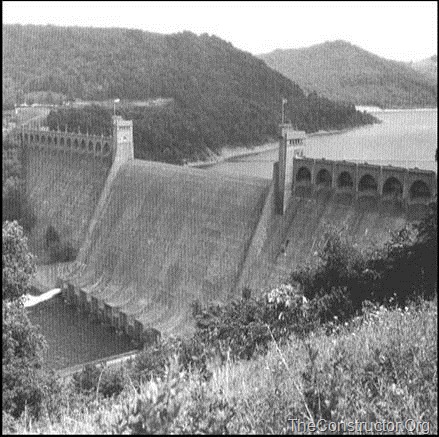
These dams are heavy and massive wall-like structures of concrete in which the whole weight acts vertically downwards
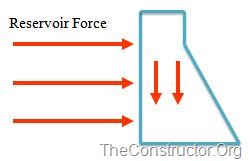
As the entire load is transmitted on the small area of foundation, such dams are constructed where rocks are competent and stable.
- Bhakra Dam is the highest Concrete Gravity dam in Asia and the second highest in the world.
- Bhakra Dam is across river Sutlej in Himachal Pradesh
- The construction of this project was started in the year 1948 and was completed in 1963 .
- It is 740 ft. high above the deepest foundation as straight concrete dam being more than three times the height of Qutab Minar.
- Length at top 518.16m (1700 feet); width at base 190.5m (625 feet), and at the top is 9.14m (30 feet)
- Bhakra Dam is the highest Concrete Gravity dam in Asia and Second Highest in the world.

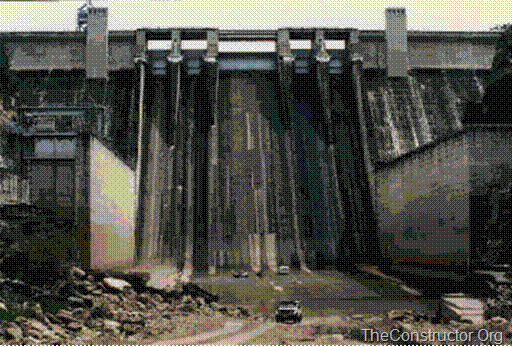
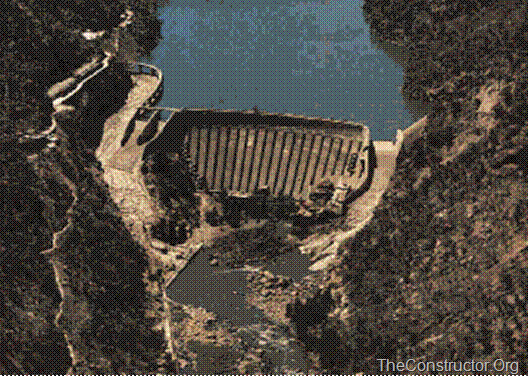
2. ARCH DAM
It is a curved masonry or concrete dam, convex upstream, which resists the forces acting on it by arch action.
The only arch dam in India – Idukki dam (double curvature in plan) – concrete arch dam
Arch Dams
- Arch shape gives strength
- Less material (cheaper)
- Narrow sites
- Need strong abutments
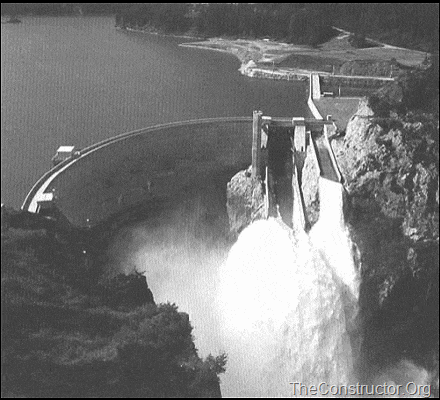
- These type of dams are concrete or masonry dams which are curved or convex upstream in plan
- This shape helps to transmit the major part of the water load to the abutments
- Arch dams are built across narrow, deep river gorges, but now in recent years they have been considered even for little wider valleys.
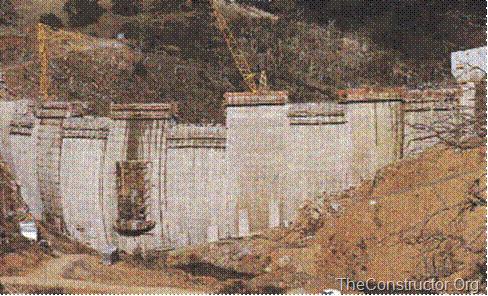
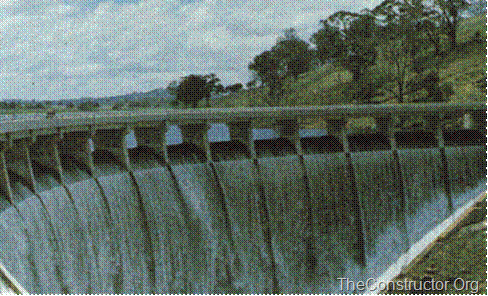
- Good for narrow, rocky locations.
- They are curved and the natural shape of the arch holds back the water in the reservoir.
- Arch dams, like the El Atazar Dam in Spain, are thin and require less material than any other type of dam.
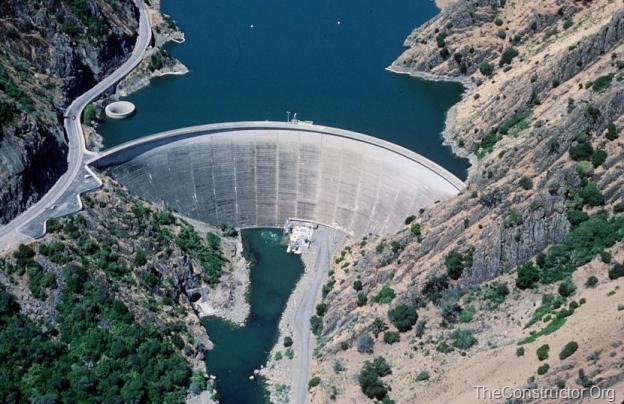
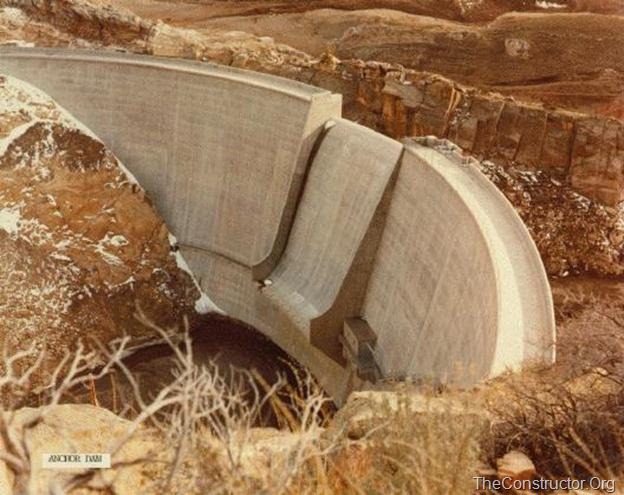
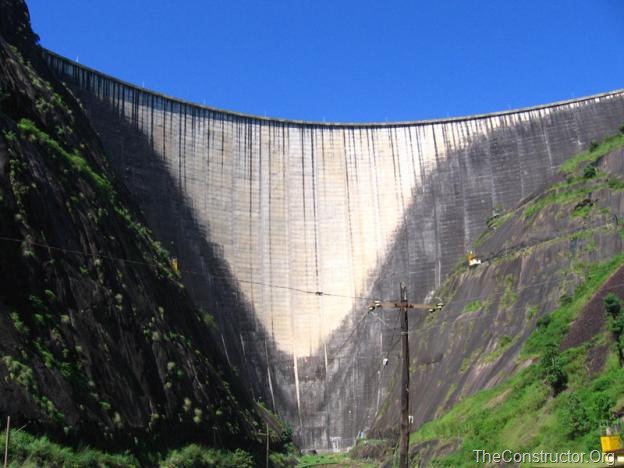
3. BUTTRESS DAM
It consists of water retaining sloping membrane or deck on the u/s which is supported by a series of buttresses. These buttresses are in the form of equally spaced triangular masonry or reinforced concrete walls or counterforts. The sloping membrane is usually a reinforced concrete slab. In some cases, the u/s slab is replaced by multiple arches supported on buttresses (multiple arch buttress dam) or by flaring the u/s edge of the buttresses to span the distance between the buttresses (bulkhead buttress dam or massive head buttress dam). In general, the structural behaviour of a buttress dam is similar to that of a gravity dam.
Buttress Dams
- Face is held up by a series of supports
- Flat or curved face
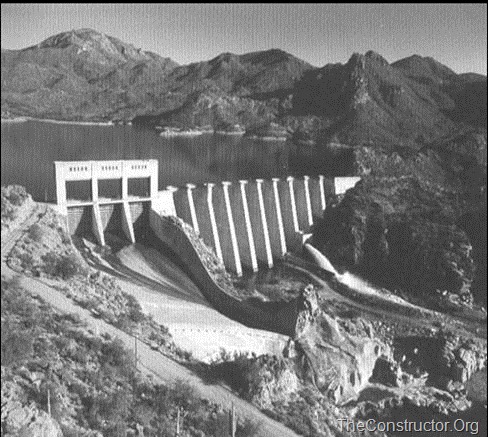
- Buttress Dam – Is a gravity dam reinforced by structural supports
- Buttress – a support that transmits a force from a roof or wall to another supporting structure
- This type of structure can be considered even if the foundation rocks are little weaker.
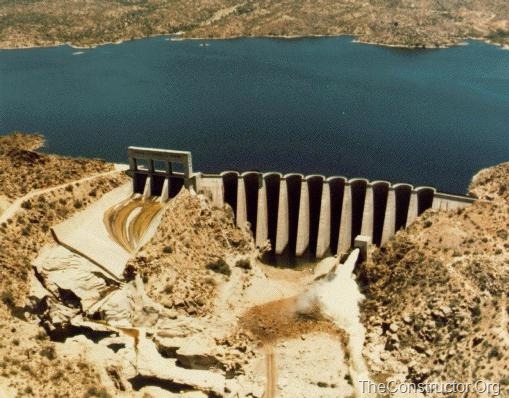
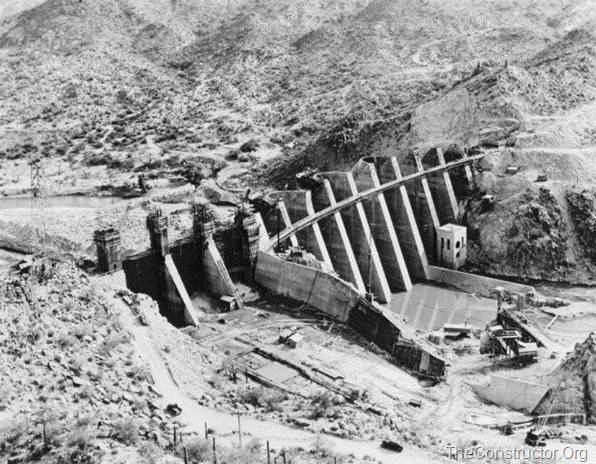
4. EMBANKMENT DAM
It is a non-rigid dam which resists the forces acting on it by its shear strength and to some extent also by its own weight (gravity). Its structural behaviour is in many ways different from that of a gravity dam.
- Earth or rock
- Weight resists flow of water
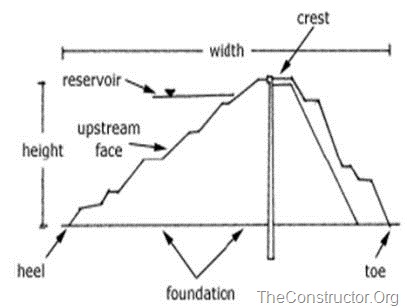
Earth Dams
- They are trapezoidal in shape.
- Earth dams are constructed where the foundation or the underlying material or rocks are weak to support the masonry dam or where the suitable competent rocks are at greater depth.
- Earthen dams are relatively smaller in height and broad at the base.
- They are mainly built with clay, sand and gravel, hence they are also known as Earth fill dam or Rock fill dam.
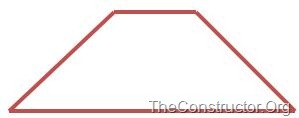
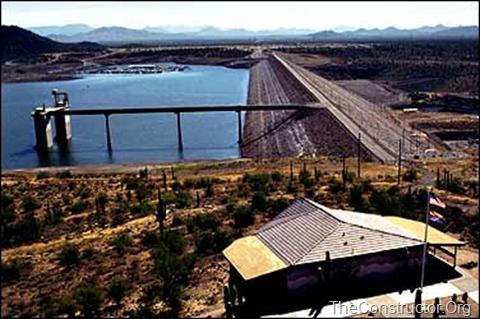
Embankment dams are also armed with a dense, waterproof core that prevents water from seeping through the structure.
Advertisements
No comments:
Post a Comment